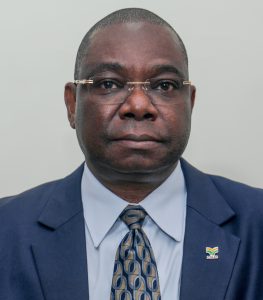Foreword
In the 1970s, while the green revolution contributed to a boom in agricultural production across many regions of the world, sub-Saharan Africa faced recurrent periods of drought. Its agriculture has been negatively impacted by socio-environmental constraints (e.g., rural exodus, scarcity, and irregularity of the rainy seasons) and agronomic research has been taken unawares resulting in inadequate management of biodiversity and its potentials, technologies, and agricultural practices to meet the needs of the context.
In 1982, the idea of a specialized African regional center on research, associating skills in physiology and genetics, was born from a common will of the Senegalese Institute of Agricultural Research (ISRA), the Center for International Cooperation in Agronomic Research for Development (CIRAD) and the Universities Paris VII and Paris XII, to develop innovative approaches to improve and stabilize groundnut production in Senegal. This regional dynamic highlighted the need to build a center to accommodate teams from the sub-region and to provide an effective scientific tool that no research institution in the south had the financial and human means to build in isolation.
In 1987, the West and Central African Council for Agricultural Research and Development (CORAF) and ISRA proposed that the expertise of this multidisciplinary research team be extended to the countries of the sub-region, which shared the same issues. This directive materialized in 1989 with the creation of the regional study center for drought improvement (CERAAS), a national center with a regional vocation. In 1997, with the impetus of the Cheikh Anta Diop University of Dakar (UCAD) and the École Normale Supérieure d’Agronomie (ENSA), new research and training facilities were built on the campus of University of Thiès, next to the ENSA. This major development by CERAAS has made it possible to invest in research and a diploma training system in the disciplines related to improving adaptation to drought.
In the early 2000s, the World Bank and the Forum for Agricultural Research in Africa (FARA), to operationalize pillar IV of the Comprehensive Africa Agriculture Development Program, launched the regional initiative for the Multi-country African Agricultural Productivity Program. The objective of this initiative was to improve African producers’ access to the technologies they need to increase their productivity and incomes by improving the relevance and efficiency of agricultural technology systems of generation and diffusion. This initiative was operationalized by the West Africa Agricultural Productivity Program (WAAPP), funded under the World Bank’s “Adaptable Program Loan,” (a progressive program for countries with several phases of implementation), under the leadership of the Economic Community of West African States (ECOWAS) and with the technical coordination of CORAF. Four phases of WAAPP were successively launched in 13 countries in West Africa. Among these countries, nine have a National Center of Specialization (CNS) responsible for conducting cutting-edge research on one or more speculations chosen by the country and included in the regional priorities defined by CORAF. Within this conceptual framework, CERAAS was the National Center of Specialization for dry cereals, including millets [Pennisetum glaucum (pearl millet), Sorghum bicolor (sorghum), Digitaria exilis (fonio)] and associated crops, such as groundnut [Arachis hypogaea), cowpea [Vigna unguiculata] and sesame [Sesamum indicum]). CERAAS benefited from 10-year funding from 2007–2017, provided by the government of Senegal and the World Bank, which offered it new perspectives in terms of mobilizing skills to tackle complex problems requiring multidisciplinary approaches. At the regional level, this partnership takes the form of a greater flow of technologies and expertise between CERAAS and several National Agricultural Research Systems (NARS) in the sub-region. After this ten-year program, CERAAS built up strong regional and international research partnerships and experience in crop adaption to dryland conditions. CERAAS has now fulfilled all requirements for gaining the status of Accredited Center of Excellence of ECOWAS on dryland crops.
Almost 40 years after its creation, CERAAS is in good time to share its contributions on achieving improved crops adaptation to drought. This book, entitled Crops Adaptation and Improvement to Drought aims to disseminate key results and technologies from research performed in West Africa and coordinated by an African Center of excellence to reach an international community (including academic and non-academic organizations as well as donors, policymakers, and the general public), interested in improving crop performance under drought conditions.
The book explores the Socioeconomic Analysis of Dryland Crop Production (Part I), the Advanced Phenotyping and Crop Modelling for Adaptation to Drylands (Part II), and the Genetic Diversity and Improvement of Dryland Crops (Part III), providing new insights in biodiversity and agro-systems management and improvement to cope with drought conditions.
The chapters herein, made by contributors who conducted their research at the CERAAS and studied or collaborated with the local staff, present climate-smart technologies, varieties that have been adapted to drought, tools developed, technologies implemented, and methods used to study physiological, genetic, and agronomical bases of crop adaptation to drought.
With such comprehensive topics and very contextualized examples, the book is intended to stand as a legacy in the field for a wide audience: students, research scholars, professionals, and experts. More importantly, this book is the first comprehensive document that addresses the complexity of adapting crops to climate change in the Sahel and West Africa.


